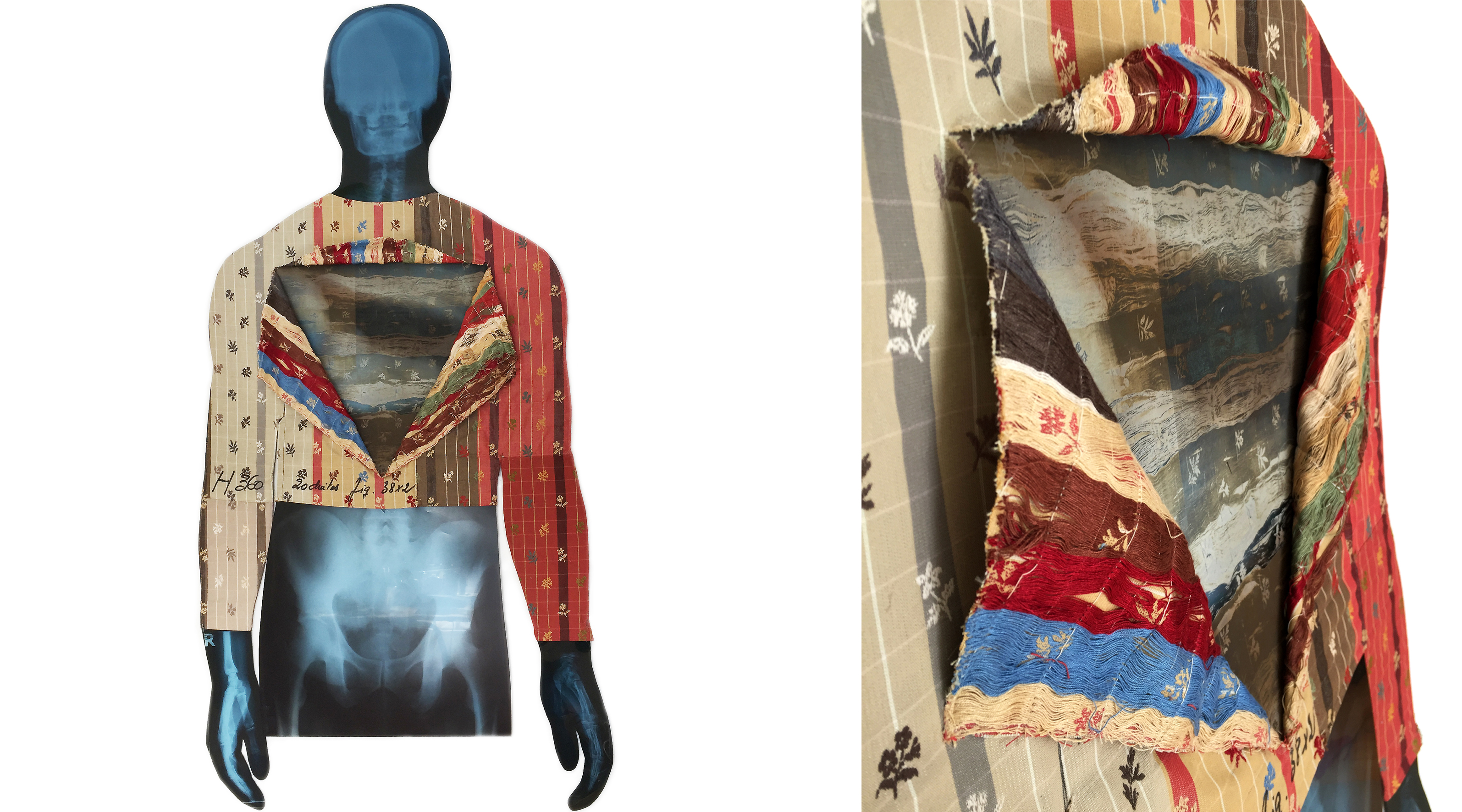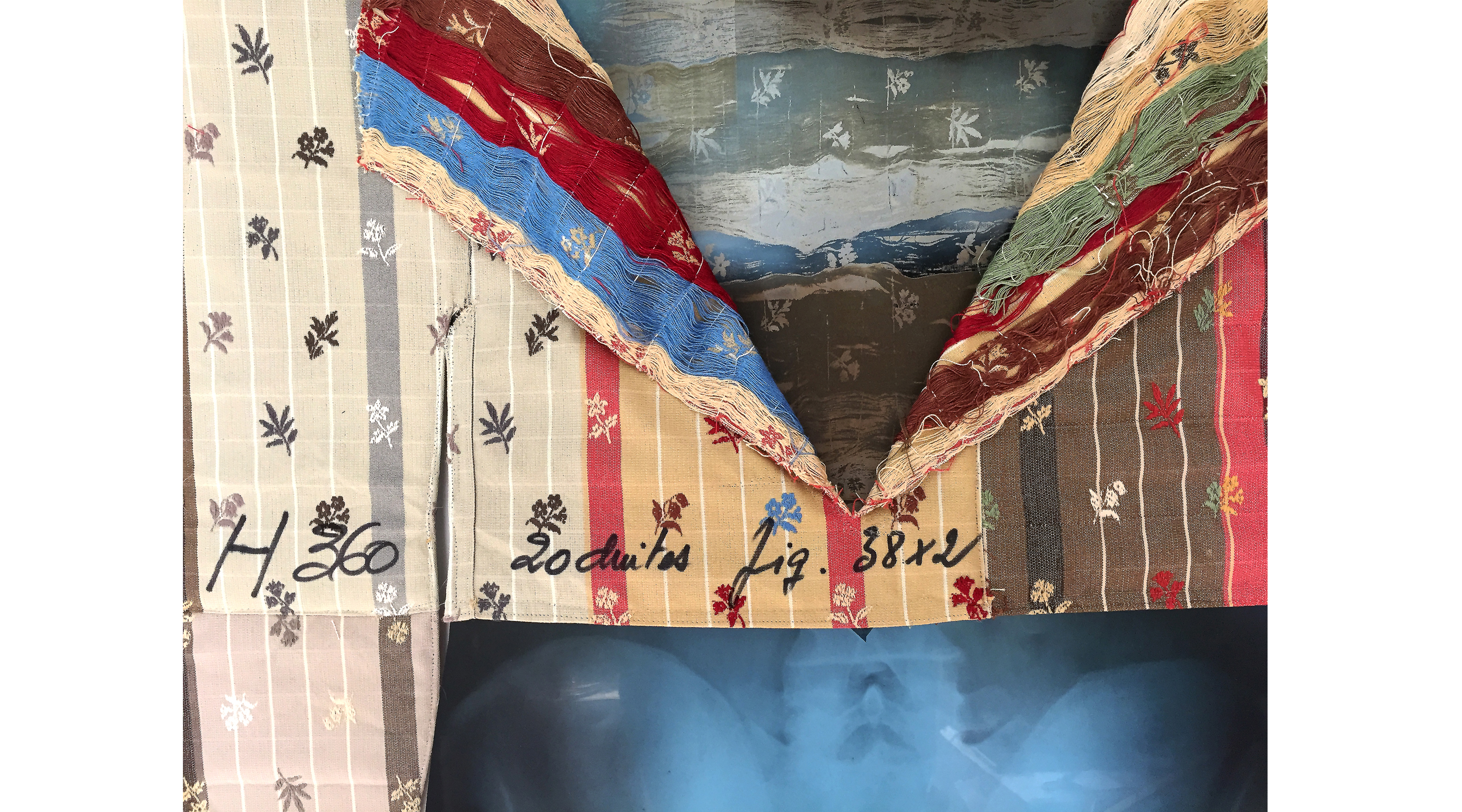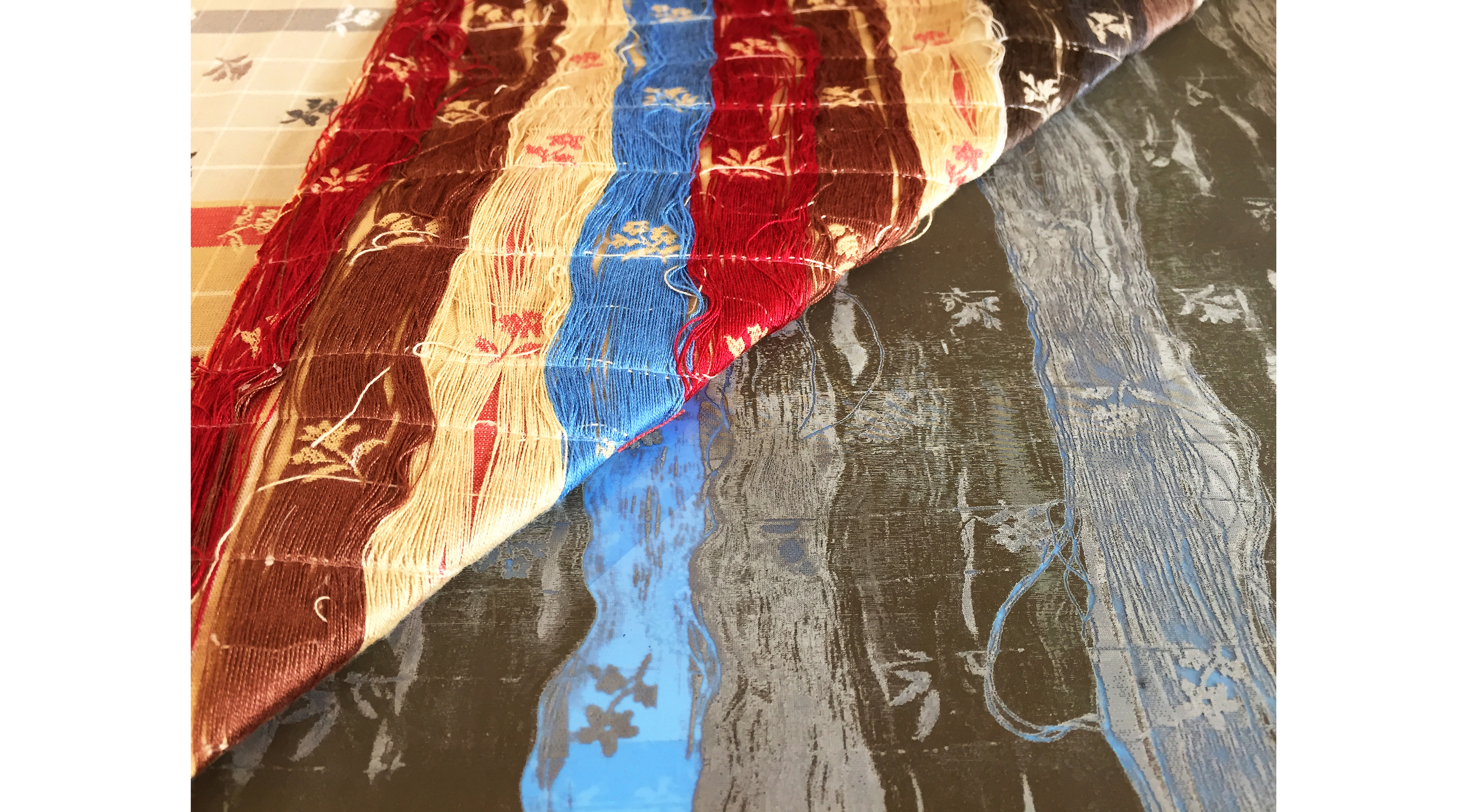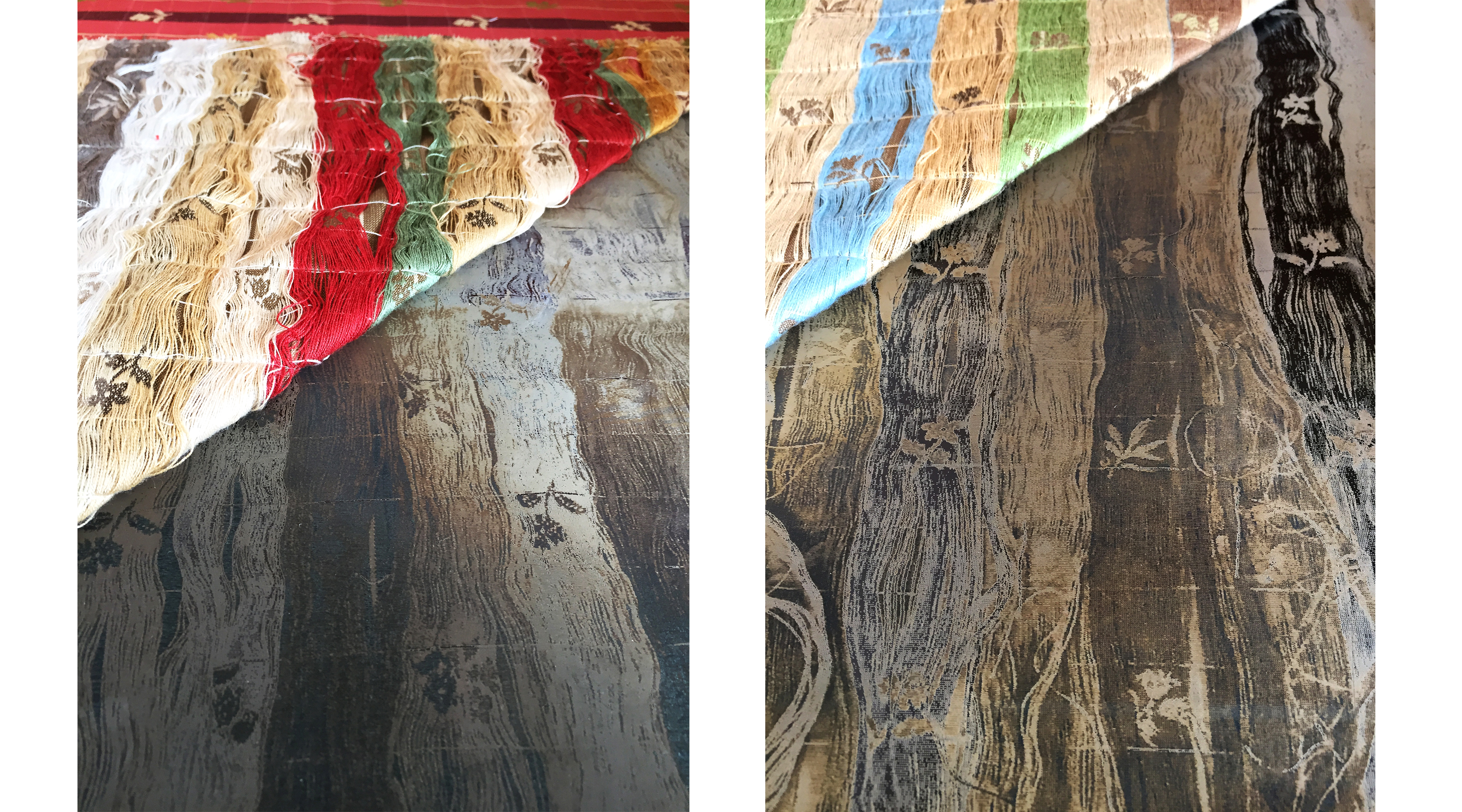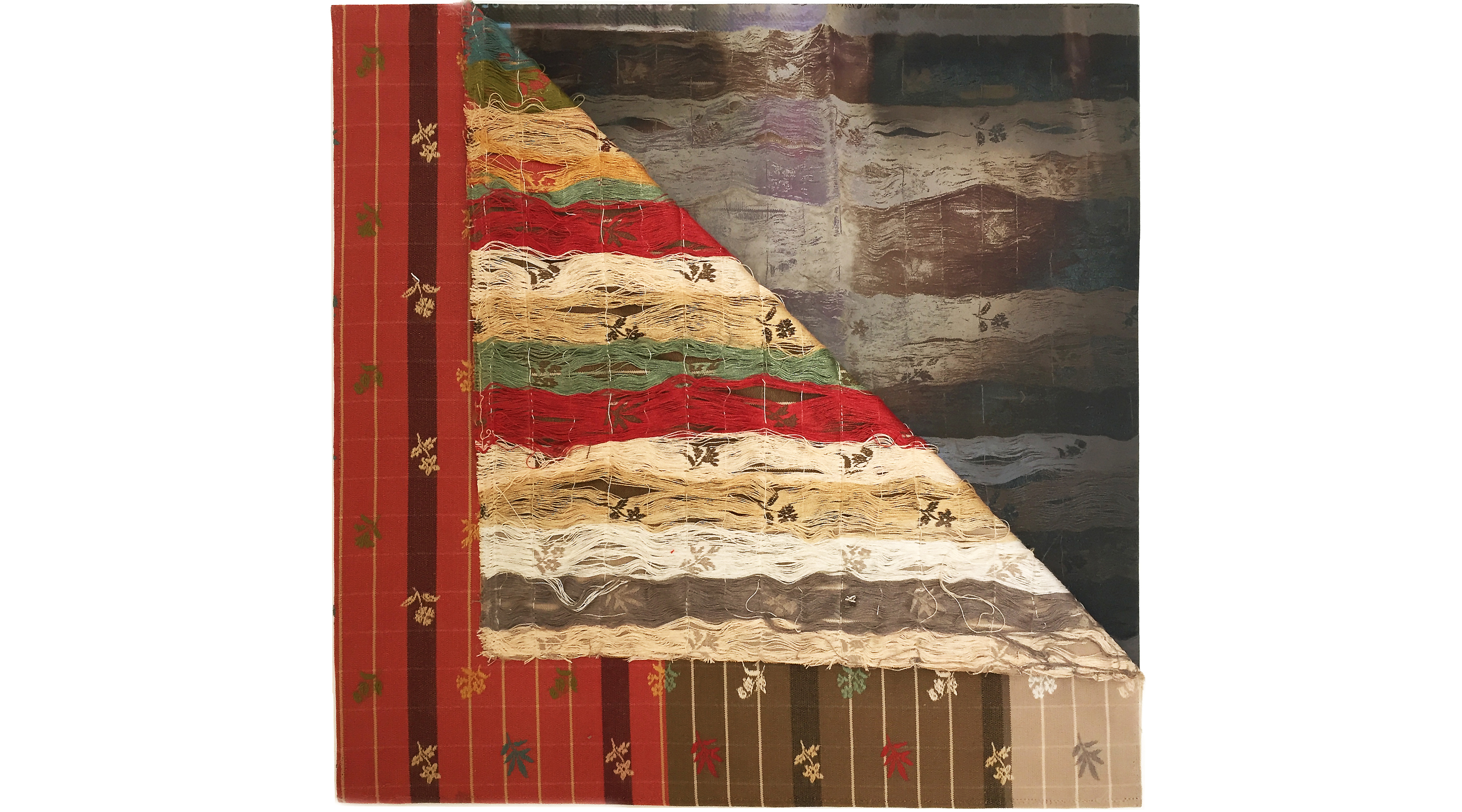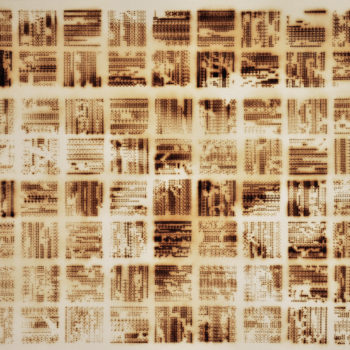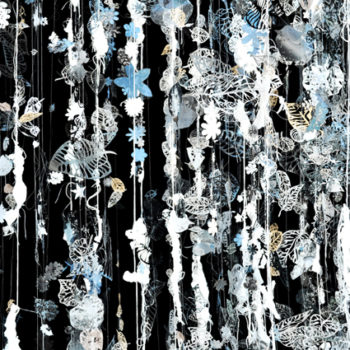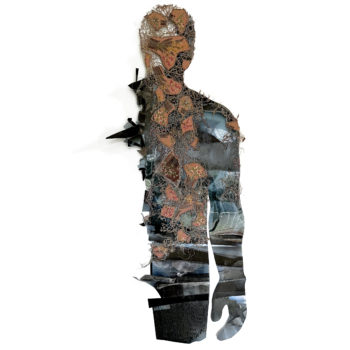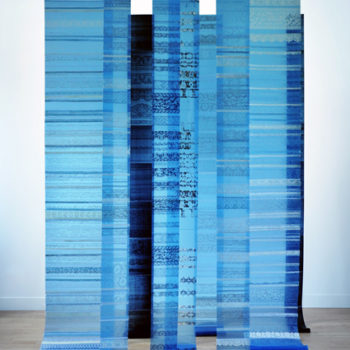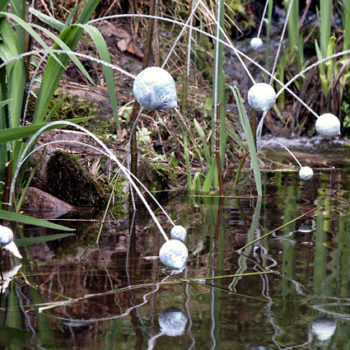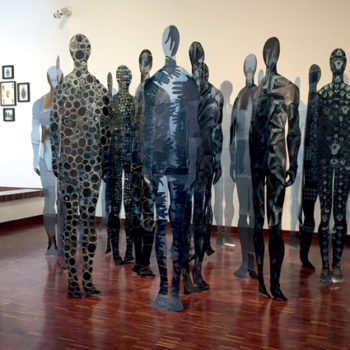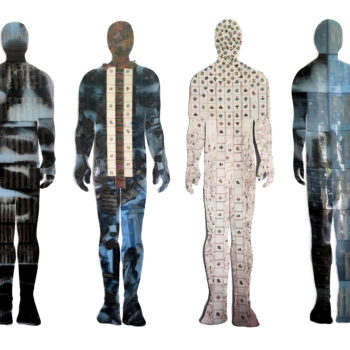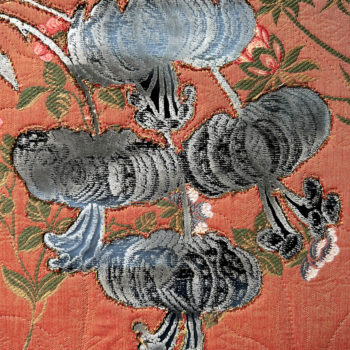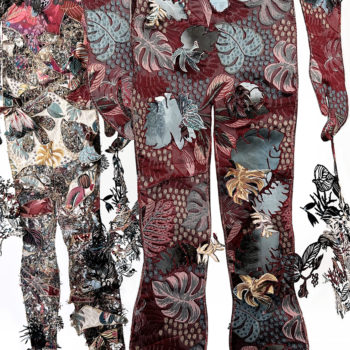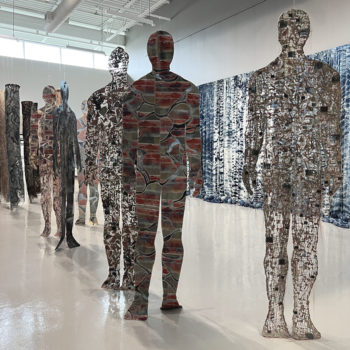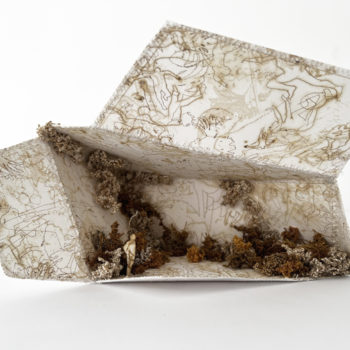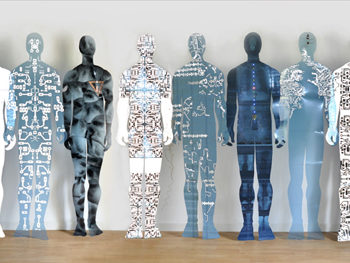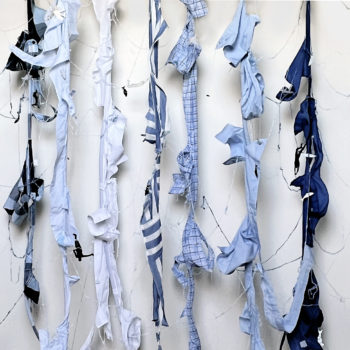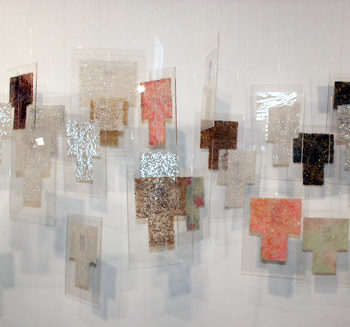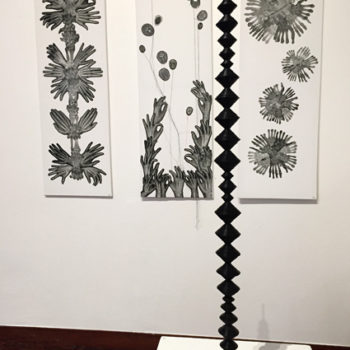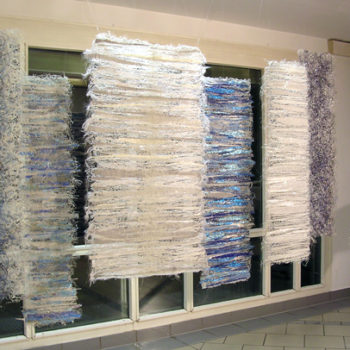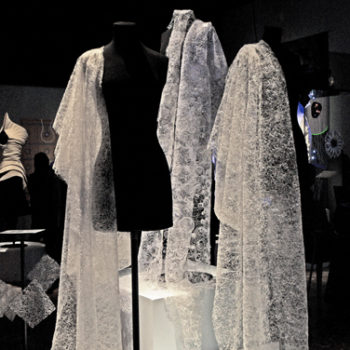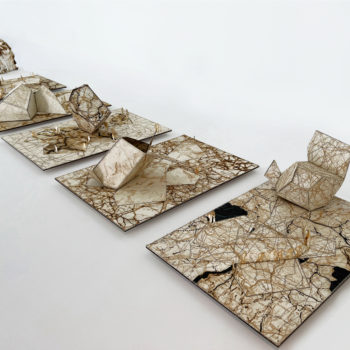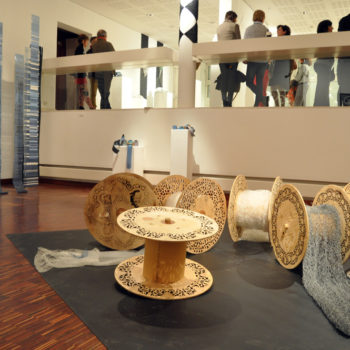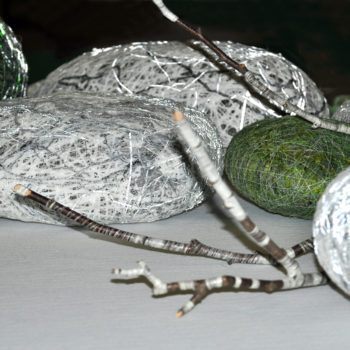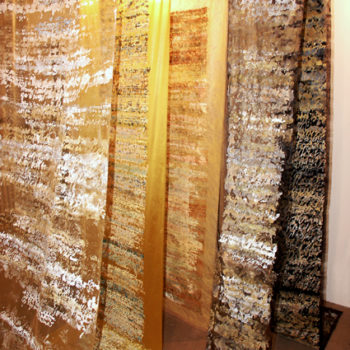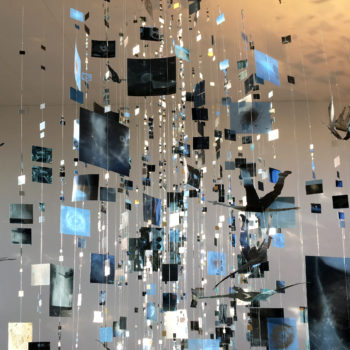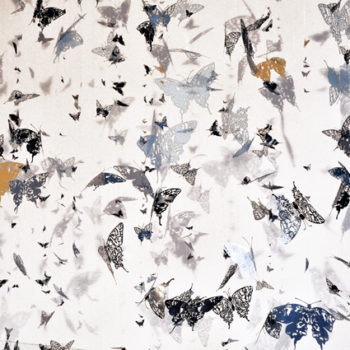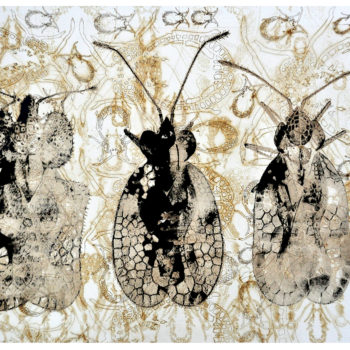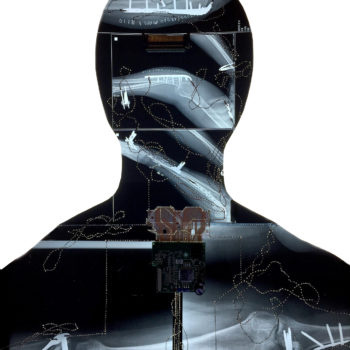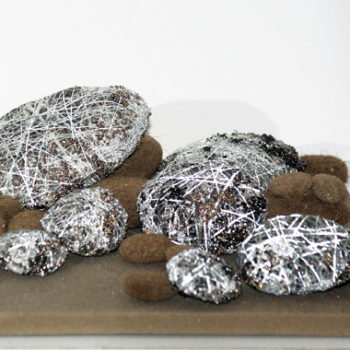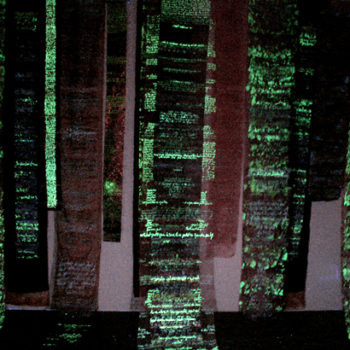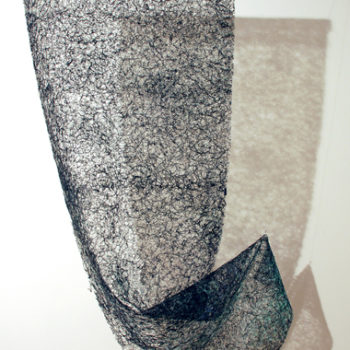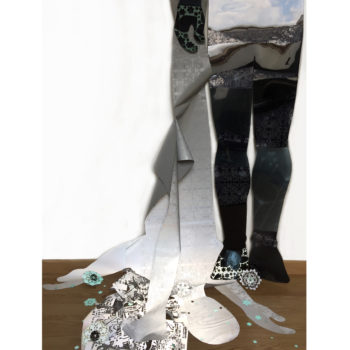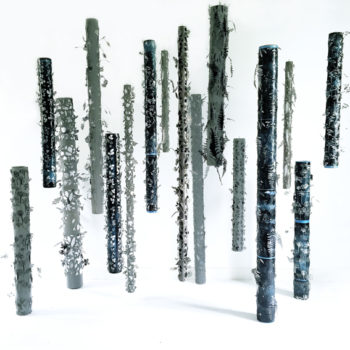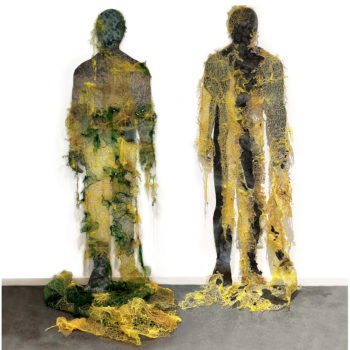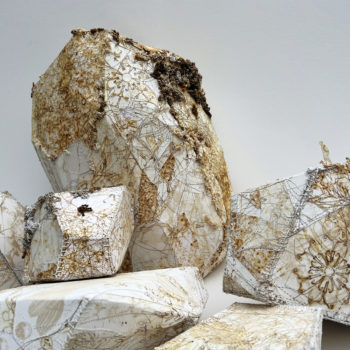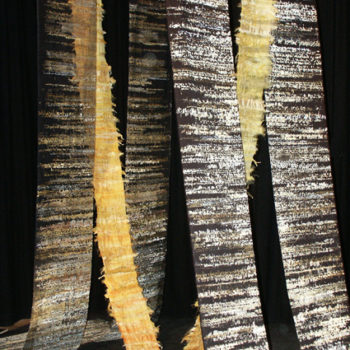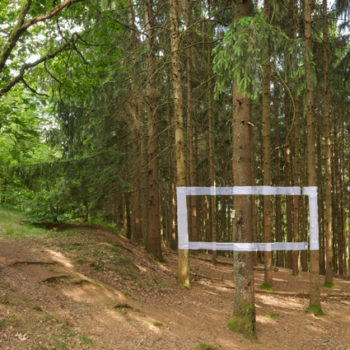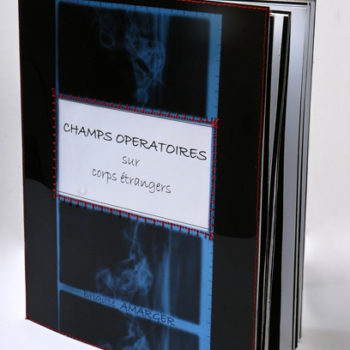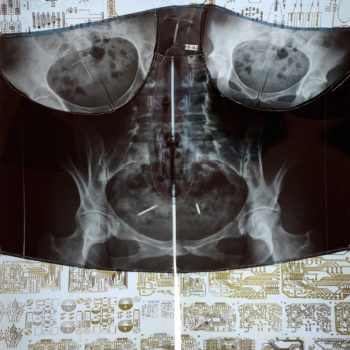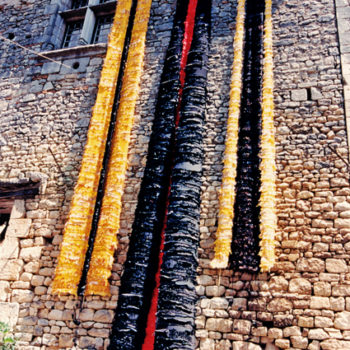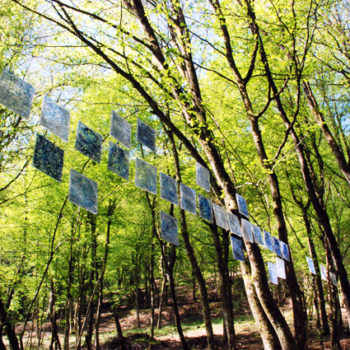Cette oeuvre questionne sur l’analogie des gestes et termes, médicaux et textiles, des découvertes engendrées par le processus créatif artistique comme par celui du mode opératoire de la dissection.Elle interroge textile et corps, matières fragiles et dégradables, donnant une seconde vie à des textiles et radiographies récupérés. Elle laisse notre imaginaire naviguer de l’enveloppe jusqu’à la chair en traversant les frontières qui partagent surface et profondeur.
L’Histologie est la branche de la médecine qui étudie les tissus biologiques, l’étude topographique et architecturale de ceux ci, sous forme d’échantillonnages, avec prélèvements et classification. Le terme de ‘’crevé ’’, entaille dans le vêtement du dessus, pour laisser apparaitre la chemise du dessous, est le même que celui employé lors de l’incision du derme du thorax. Lors d’une autopsie, la découpe en ’’ Y ’’ permet de retourner la peau sur les cotés du corps et elle semble ici dévoiler les muscles d’un écorché et former les revers d’une veste. Annoté et répertorié ‘’H 360’’, cette abréviation délivre au corps autopsié un indice d’identité.
Lors de ce simulacre d’examen post mortem, sur un ‘’cadavre ‘’ radiographié, en partie vêtu, apparaissent les traces du tissu gravé, une empreinte mémorisée qui crée une imagerie médicale inattendue. À coté de ce corps, se trouvent quatre ‘’prélèvements’’ destinés aux ‘’collections ‘’et ‘’banques de tissus’’ qui conservent ces échantillons destinés au diagnostique ou à la recherche.
Cette œuvre sera associée à deux autres, dans une installation modulable, lors de l’exposition ‘’ MATERIAL THINKING ‘‘, Qingdao, Chine. (20.06 / 20.09.2022)
This work questions the analogy of gestures and terms, medical and textile, of the discoveries generated by the artistic creative process as well as by that of the operating mode of dissection. It questions textiles and bodies, fragile and degradable materials, , giving a second life to recovered X-rays and textiles, letting our imagination navigate from the envelope to the flesh, crossing the borders that divide surface and depth.
Histology is the branch of medicine that studies biological tissues, the topographical and architectural study of them, in the form of samples, with classification. The term “ crevé ”, cut in the upper garment, to reveal the shirt below, is the same as that used when incising the dermis of the thorax. During an autopsy, the “Y” cut allows the skin to be turned over on the sides of the body and here, seems to reveal the muscles of a skinned person and to form the lapels of a jacket.Annotated and listed “H 360”, this abbreviation provides the autopsied body with a clue of identity.
During this simulacrum post mortem examination, on a X-rayed « corpse », partly clothed, the traces of the engraved fabric appear, a memorized imprint, creating an unexpected medical imagery. Next to this body, there are four “samples” intended for “collections” and “tissue banks” which store these samples intended for diagnosis or research.
This work will be associated with two others, in a modular installation, during the exhibition » MATERIAL THINKING », Qingdao, China. (20.06 / 20.09.2022)

